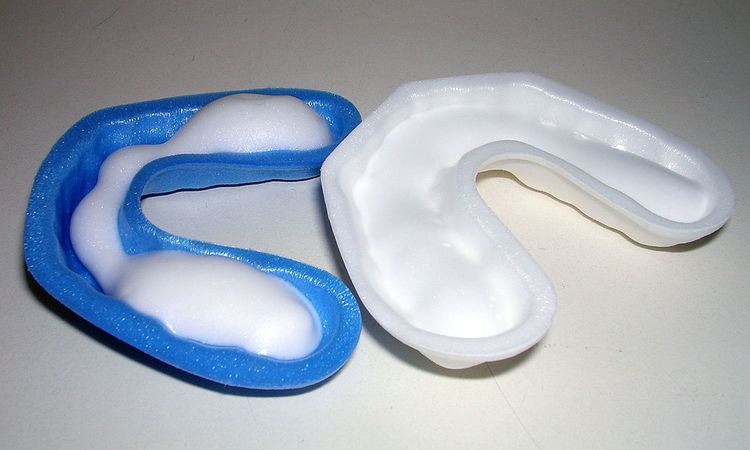 | ||
Fluoride varnish is a highly concentrated form of fluoride which is applied to the tooth's surface, by a dentist, dental hygienist or other health care professional, as a type of topical fluoride therapy. It is not a permanent varnish but due to its adherent nature it is able to stay in contact with the tooth surface for several hours. It may be applied to the enamel, dentine or cementum of the tooth and can be used to help prevent decay, remineralise the tooth surface and to treat dentine hypersensitivity. There are more than 30 fluoride-containing varnish products on the market today, and they have varying compositions and delivery systems. These compositional differences lead to widely variable pharmacokinetics, the effects of which remain largely untested clinically.
Contents
- Clinical Recommendations
- United Kingdom
- Types of Varnish
- Cost Effectiveness
- Advantages
- Disadvantages
- Indications and contraindications
- References
Fluoride varnishes are relatively new in the United States, but they have been widely used in western Europe, Canada, South Africa and the Scandinavian countries since the 1980s as a dental caries prevention therapy. They are recognised by the Food and Drug Administration for use as desensitising agents, but, currently, not as an anti-decay agent. Both Canadian and European studies have reported that fluoride varnish is as effective in preventing tooth decay as professionally applied fluoride gel; however, it is not in widespread use for this purpose.
Fluoride varnish is composed of a high concentration of fluoride as a salt or silane preparation in a fast drying, alcohol and resin based solution. The concentration, form of fluoride, and dispensing method may vary depending on the manufacturer. While most fluoride varnishes contain 5% sodium fluoride at least one brand of fluoride varnish contains 1% difluorsilane in a polyurethane base and one brand contains 2.5% sodium fluoride that has been milled to perform similar to 5% sodium fluoride products in a shellac base.
Clinical Recommendations
A panel of experts convened by the American Dental Association (ADA) Council on Scientific Affairs presents evidence-based clinical recommendations regarding professionally applied, prescription-strength and home-use topical fluoride agents for caries prevention. The panel recommends the use of 2.26 percent fluoride varnish for people at risk of developing dental caries. As part of the evidence-based approach to care, these clinical recommendations should be integrated with a practitioner's professional judgment and the patient's needs and preferences.
United Kingdom
Fluoride varnish is widely used in the United Kingdom, following guidelines from multiple sources backing its efficacy. Public Health England, a UK government organisation sponsored by the Department of Health, released guidance in 2014 recommending fluoride varnish application at least twice yearly for children and young adults. Similarly, the Scottish Intercollegiate Guidelines Network and the Scottish Dental Clinical Effectiveness Programme have both released independent guidance recommending at least twice yearly fluoride varnish application, citing a strong clinical evidence base. SIGN recommends fluoride varnish at a concentration of 2.2%, while SDCEP recommends 5%.
Types of Varnish
Different varnish products release varying amounts of calcium, inorganic phosphate, and fluoride ions. MI varnish releases the most amounts of calcium ions and fluoride. Enamel Pro varnish releases the most amount of inorganic phosphate ions. Each type of varnish is designed to be used in specific situations.
Cost Effectiveness
Fluoride varnish treatment has a better outcome at preventing cavities at a lower cost compared to other fluoride treatments such as the fluoride mouth rinsing. For fluoride varnish treatment, the benefit to cost ratio 1.8:1, whereas fluoride mouth rinsing is 0.9:1. With fluoride varnish treatments, one can save by preventing future restorations. Fluoride varnish also requires fewer treatments for measurable effectiveness, therefore in the long run it is cost effective when compared to other treatments.
Advantages
Disadvantages
Indications and contraindications
Indications for use
Contraindications for use
